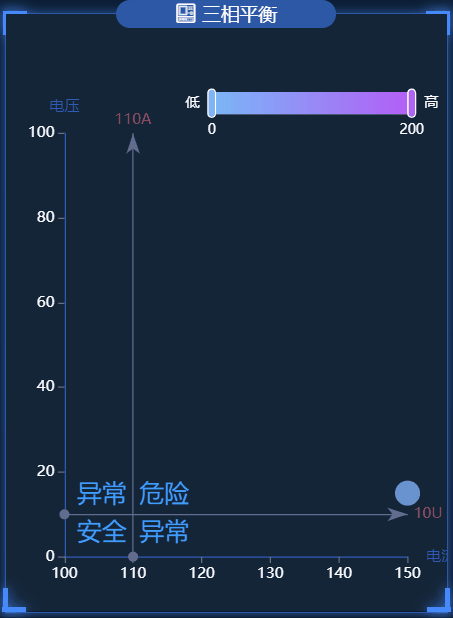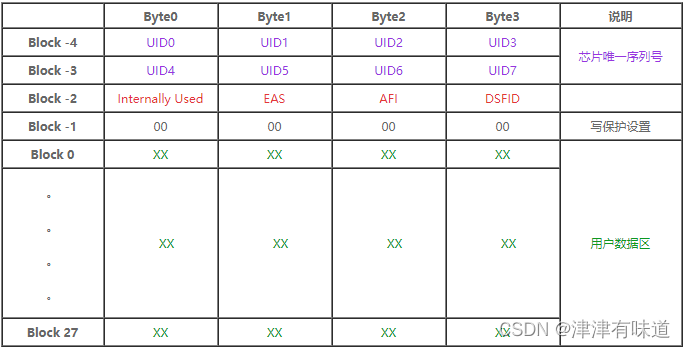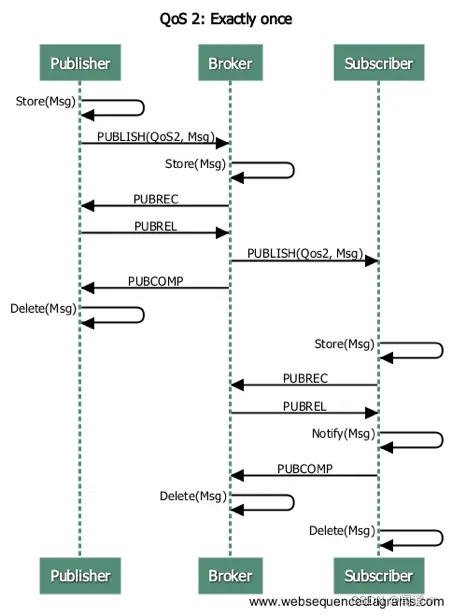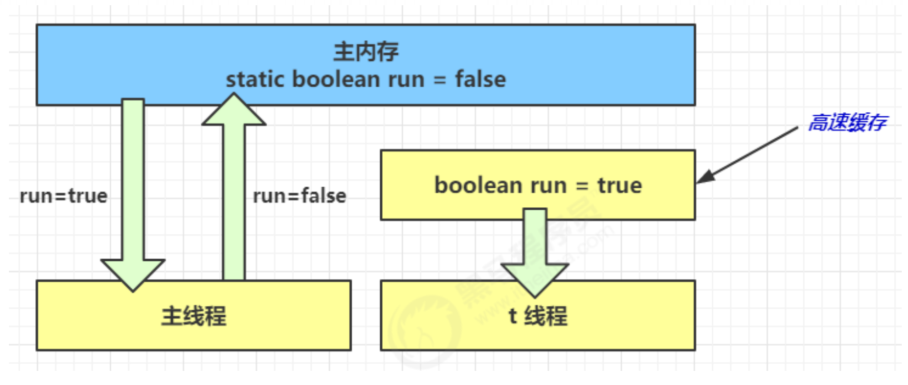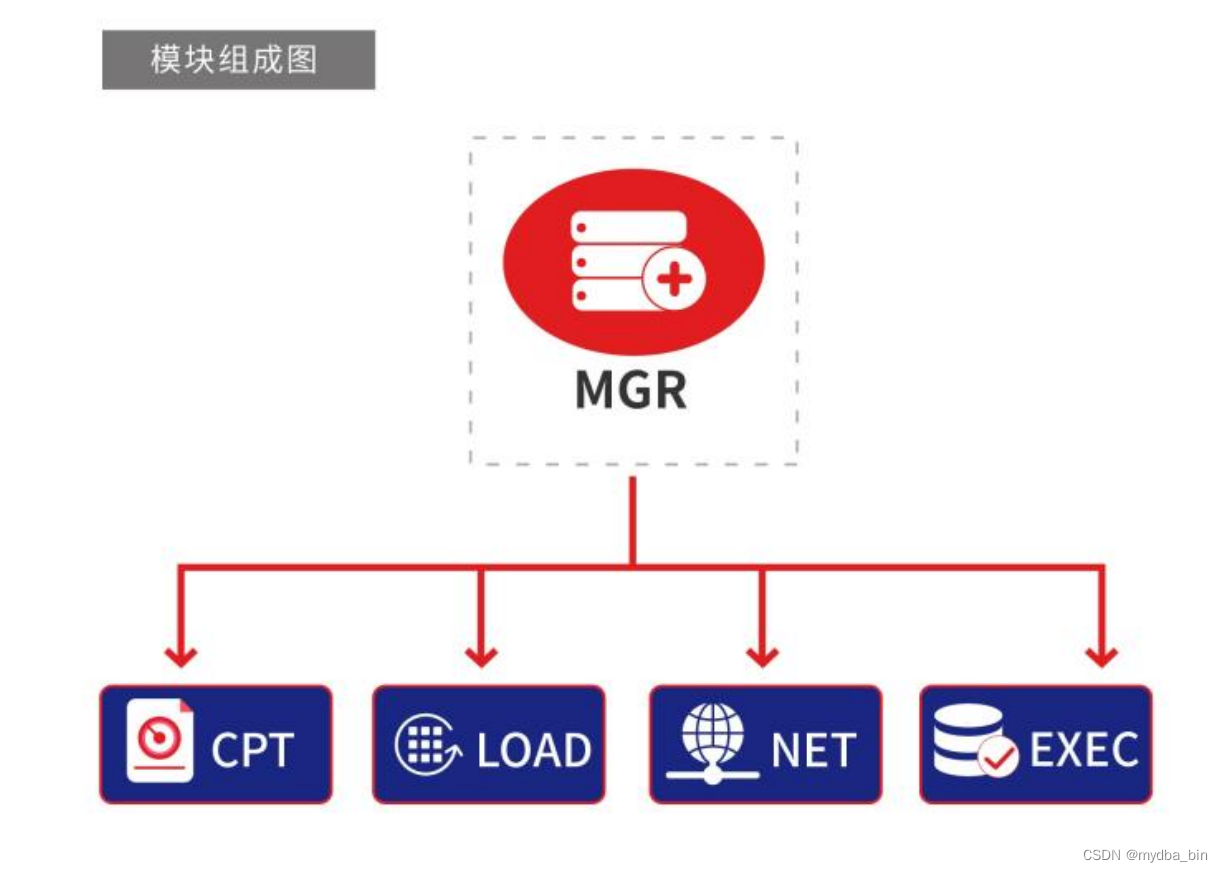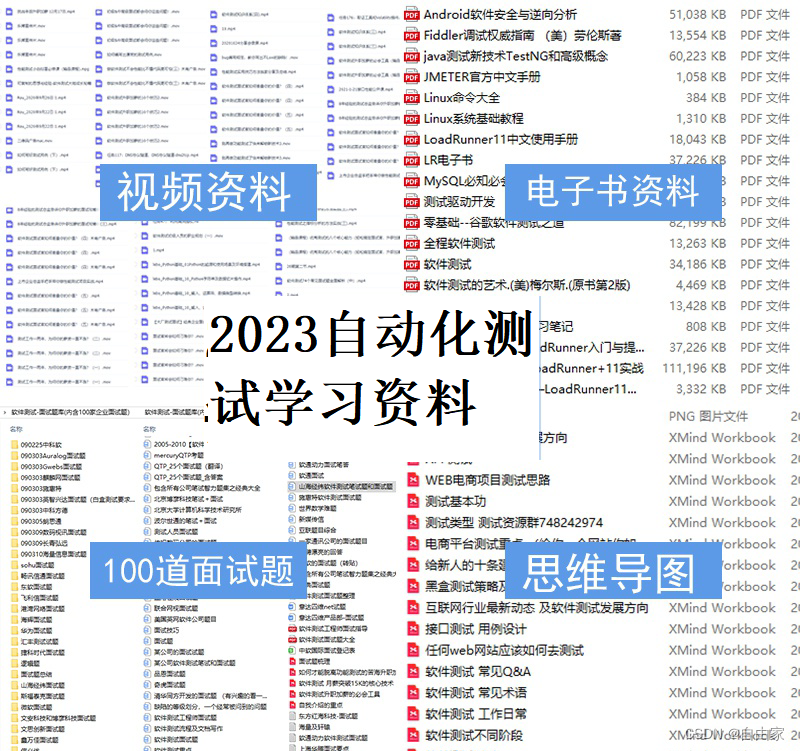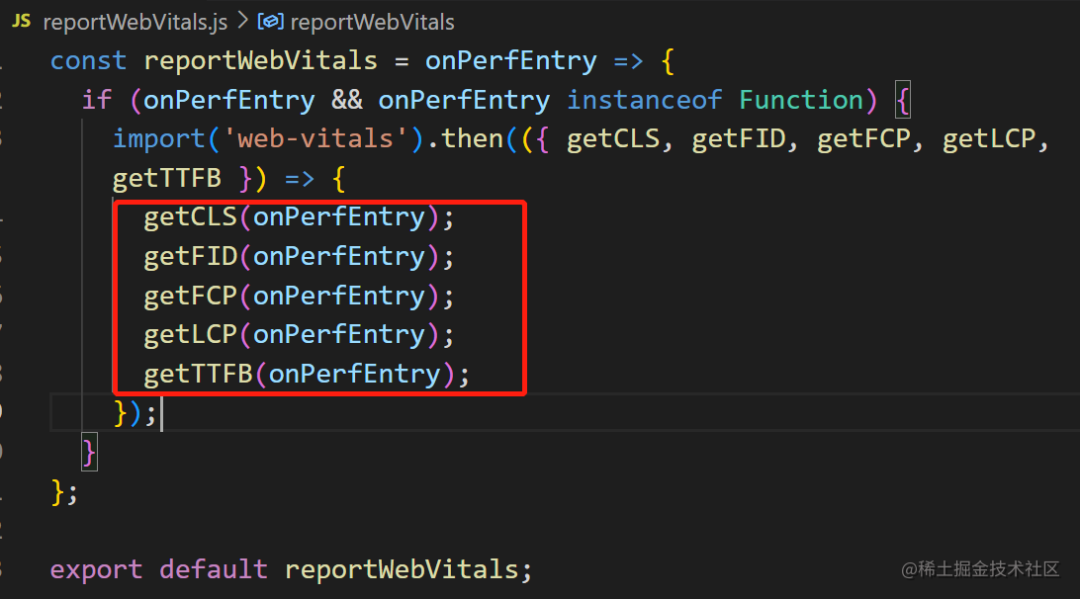北邮国院大三电商在读,随课程进行整理知识点。仅整理PPT和相关法条中相对重要的知识点,个人认为相对不重要的细小的知识点不列在其中。如有错误请指出。转载请注明出处,祝您学习愉快。
如需要pdf格式的文件请私信联系或微信联系
PRC是否infringe CR的判断标准
先看有没有originality
再看有没有right
再看有没有limitation
US IP Law最重要的一点 - “fair use”
Fair use is a doctrine in copyright law that allows limited use of copyrighted material without permission from the copyright holder under certain circumstances, such as for purposes of criticism, commentary, or parody (there is no closed list, unlike China)
合理使用是版权法中的一种原则,允许在某些情况下,如出于批评、评论或恶搞的目的,在未经版权所有者许可的情况下,有限地使用受版权保护的材料(不像中国,没有封闭的清单)。
四个判断是否符合fair use的判断标准
- the purpose and character of your use 你使用的目的和特点
- Has the material you have taken from the original work been transformed by adding new expression or meaning? 你从原作中提取的材料是否通过添加新的表达或意义而发生了变化?
- E.g. Parody the parodist transforms the original by holding it up to ridicule/ uses it for ‘social commentary’ 拙劣的戏仿者通过拿着原作来嘲笑/把它用作“社会评论”来改造原作。
- Was value added to the original by creating new information, new aesthetics, new insights, and understandings? 是否通过创造新信息、新美学、新见解和新理解为原作增加了价值?
- Purposes such as scholarship, research, or education may also qualify as transformative uses because the work is the subject of review or commentary. 奖学金、研究或教育等目的也可以作为变革性使用,因为作品是审查或评论的主题。
- Has the material you have taken from the original work been transformed by adding new expression or meaning? 你从原作中提取的材料是否通过添加新的表达或意义而发生了变化?
- the nature of the copyrighted work 受版权保护作品的性质
- factual? Published or unpublished? 事实吗?发表还是未发表?
- the amount and substantiality of the portion taken 份量:所占部分的数量和实质
- Less taken the better, but if the ‘heart’ of the work is taken, then may not be considered fair use 取得越少越好,但如果取走作品的“核心”,则可能不被视为合理使用
- the effect of the use upon the potential market. 使用对潜在市场的影响
- whether your use deprives the copyright owner of income or undermines a new or potential market for the copyrighted work 你的使用是否剥夺了版权所有人的收入,或破坏了受版权保护作品的新市场或潜在市场
- (就像PPT Exam Revision 1 Copyright Law中的两个案例,他们不符合fair use的原因就是effect the market)
Special protection for ‘famous’ TMs
Trademarks that are considered famous or “well-known” have additional protection even if not registered
即使没有注册,被认为是著名或“知名”的商标也有额外的保护
**PRC TM Law Art.13-14 ** 具体法条看W1
The holder of a well known trademark is entitled to request protection against anyone else registering or using a reproduction, an imitation, or a translation of the well-known TM
驰名商标的持有人有权请求保护,防止他人注册或使用该驰名商标的复制、模仿或翻译【三种侵权情况】
判断well-known TM的点(Art.13)
- must be ‘well known’ 一定是“众所周知的”
- to the ‘relevant public’ 对于“有关的工作”
判断well-known TM在PRC受保护范围的因素 - regist or not
- 在中国已经注册的,在全领域受保护
- 在中国未注册的,只在相关的领域受保护
US在TM上仍有fair use,但是多了一个dilution(稀释)的概念
TM Dilution Law - US Law
“dilution by blurring” is association arising from the similarity between a mark or trade name and a famous mark that impairs the distinctiveness of the famous mark
“模糊稀释”是指商标或商号与驰名商标之间的相似性产生的联想,从而损害了驰名商标的显著性
“dilution by tarnishment” is association arising from the similarity between a mark or trade name and a famous mark that harms the reputation of the famous mark.
“因玷污而稀释”是指由于商标或商号与驰名商标之间的相似性而产生的关联,从而损害了驰名商标的声誉。
判断Dilution的factors
(i) the degree of similarity between defendant’s mark and the famous mark;
被告商标与驰名商标的相似程度;
(ii) the distinctiveness of the famous mark;
驰名商标的显著性;
(iii) whether the famous mark’s owner “is engaging in substantially exclusive use of the mark;”
驰名商标所有人是否“实质上独占使用该商标”;
(iv) the degree of recognition of the famous mark;
驰名商标的认可度;
(v) whether the defendant intended to create an association with the famous mark; and
被告是否有意与该驰名商标产生关联
(vi) actual association between the defendant’s mark and the famous mark
被告商标与驰名商标之间的实际联系
Exclusions
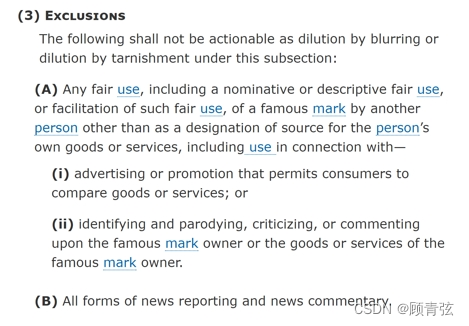
PRC也有类似于dilution的规定,但是也不太一样
“the distinctiveness of the well-known trademark is weakened [dilution by blurring],
“驰名商标的显著性被削弱[模糊化淡化],
the market reputation of the well-known trademark is derogated [dilution by tarnishment], or
驰名商标的市场声誉受到损害[因玷污而淡化],
the market influence of the well-known trademark is improperly used [dilution by free-riding]”
不正当地使用驰名商标的市场影响力[搭便车稀释
接下来是database的内容,这里考试不会给出相关的法律条文,需要背一背
Compliation 汇编 (PRC CL A14)
PRC Copyright Law Article 14
A collection of preexistingworks or passages therefrom, or of data or other material which does not constitute a work, if manifesting the originality of a work by reason of the selection or arrangement of its contents, is a compilation.
收集已有的作品或者其中的段落,或者收集不构成作品的资料或者其他材料,由于对作品内容的选择或者安排而显示出作品的独创性的,为汇编。
**Ownership: **
The copyright in such compilation shall be enjoyed by the compiler, provided that the exercise of such copyright does not prejudice the copyright in the preexistingworks.
编辑作品的著作权由编辑者享有,但行使著作权不得影响原作品的著作权。
PRC Copyright Law保护database的什么
structure of a database protected if,
保护的数据库结构,如果
- selection or arrangement of the contents is original – ‘author’s own intellectual creation 内容的选择或编排是原创的,是作者自己的智力创造
意思是只保护你怎么规划存放这些数据的方法或者说structure,不保护你database的数据,数据是另外的保护
Content of a database must qualify for copyright protection separately from the structure of the database
数据库的内容必须与数据库的结构分开获得版权保护
关于database的数据(PRC)
Only “creative” data (photos, papers, music etc )are protected by copyright
只有“创造性”数据(照片、论文、音乐等)才受版权保护
“factual” data (statistics, raw scientific results etc )are not protected by copyright
“事实”数据(统计数据、原始科学成果等)不受版权保护
- All and any factual data can be copied and re-used freely 所有和任何事实数据都可以自由复制和重复使用
整体来看
Copyright law protects database structure, if original – i.e. author’s ownintellectual creation
版权法保护数据库结构,如果是原创的,即作者自己的智力创造
- All rights/ limitations - as for other copyright works 所有权利/限制-与其他版权作品一样
- Contents may or may not be protected by copyright law – contents need to be assessed forcopyrightability separately from the structure 内容可能受到版权法的保护,也可能不受版权法的保护——内容需要与结构分开进行版权性评估
EU的database比较特殊,有一个‘sui generis’(独一无二的) right – database right
所以说,EU law给了database两层保护,copyright和Sui generis的database right.
Sui generis protection 保护了什么
Substantial investment (qualitative &/or quantitative) In either:
实质性投资(定性和/或定量)在:
- Obtaining contents of database 获取数据库内容
- Verification of contents 核实内容
- Presentation of contents 呈现内容
保护期限:15 Years,如果有新的substantial investment,会刷新这十五年
Restricted Acts
To prevent extraction and/ or re-utilization of the whole or of a substantial part, evaluated qualitatively and/ or quantitatively of the contents of the database
为防止提取和/或重新利用全部或大部分数据库内容,对数据库内容进行定性和/或定量评价
The repeated and systematic extraction and/or re-utilization of insubstantial parts of the contents of the database implying acts contrary to the 3 step test
重复和系统地提取和/或重新利用数据库内容的非实质性部分,这意味着违反了三步测试
- Extraction: means the permanent or temporary transfer of the contents of a database to another medium 抽取:指将数据库的内容永久或暂时转移到另一媒介上
- Re-utilization: means any form of making available to the public of the contents of a database 再利用:指以任何形式向公众提供数据库的内容
Exception
Exceptions: lawful users may
- Extract and/or reutilize insubstantial parts of its contents for any purpose whatsoever 为任何目的提取和/或重新利用其内容的非实质性部分
- Not perform acts which conflict with the 3 step test 不执行与三步测试相冲突的行为
- Contractual provisions contrary to this provision null and void 合同中与本规定相抵触的条款无效
- Extraction for the purposes of illustration for teaching or scientific research 为教学或科学研究目的的插图提取
- Extraction for the purposes of public security or of an administrative or judicial procedure 为公共安全或者行政、司法程序的目的提取
Database的Owner
The original owner of the rights is, according to Article 7(1) “the maker of a database.”
根据第7条第1款的规定,这些权利的原始所有人是“数据库的制作者”。
- “the maker of a database is the person who takes the initiative and the risk of investing,” “数据库的创建者是主动承担投资风险的人,”



